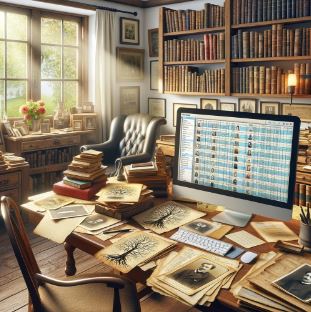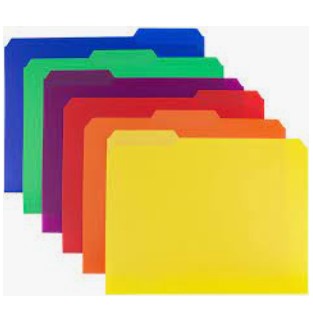This wasn’t my plan for a blog post but I think it’s vitally important for everyone interested in family history, whether you live in Indiana or not.
I’m copying the email I sent out to many folks who do live in Indiana yesterday. Even it you don’t – this will effect you as records are disappearing. Don’t believe me but believing your news source?! Think again. This is a bipartisan attack on all of us and we need to have our voices heard.:
This morning, I became aware of Indiana House Bill 1148.03, which just passed and is headed for the state Senate. I am emailing you because I know you have a deep love of history and genealogy.
While the bill has been widely framed as addressing gender changes on birth certificates, hidden within its provisions is a major change that threatens the work of genealogists, historians, and all who seek access to historical birth records. Buried on page 10 of the bill is a proposal to extend the restriction on birth certificate access from 75 years to 99 years. This unnecessary change would significantly hinder the ability of genealogists, historians, and researchers to access critical historical records, delaying access for an additional 24 years—nearly an entire generation.
This same legislative effort was attempted in January 2024 (HB 1365) but failed in committee. Now, it has returned—this time hidden within a broader bill.
Why This Change Must Be Stopped:
 A Reversal of Established Access – For decades, the 75-year threshold has balanced privacy concerns with the public’s right to access historical records. Arbitrarily extending the wait to 99 years serves no clear purpose other than restricting access to our collective history.
A Reversal of Established Access – For decades, the 75-year threshold has balanced privacy concerns with the public’s right to access historical records. Arbitrarily extending the wait to 99 years serves no clear purpose other than restricting access to our collective history.
 Hindering Family Research – Birth records are vital for genealogical research, citizenship applications, and historical studies. This change would block access to information for countless individuals seeking to understand their heritage.
Hindering Family Research – Birth records are vital for genealogical research, citizenship applications, and historical studies. This change would block access to information for countless individuals seeking to understand their heritage.
 A Threat to Historical and Academic Research – Many historical projects rely on birth records to reconstruct community histories, track migration patterns, and verify personal identities. Extending the restriction to 99 years would severely impede research and publication efforts.
A Threat to Historical and Academic Research – Many historical projects rely on birth records to reconstruct community histories, track migration patterns, and verify personal identities. Extending the restriction to 99 years would severely impede research and publication efforts.
 No Justification for the Change – There has been no demonstrated need for this increase. Indiana’s current 75-year access aligns with national norms, ensuring transparency while respecting privacy. This bill does not provide a clear reason why an additional 24-year delay is necessary.
No Justification for the Change – There has been no demonstrated need for this increase. Indiana’s current 75-year access aligns with national norms, ensuring transparency while respecting privacy. This bill does not provide a clear reason why an additional 24-year delay is necessary.
Take Action Now
If HB 1148.03 is passed, Indiana will become one of the most restrictive states in the nation regarding historical birth records. We cannot allow this to happen.
I urge you to contact your legislators immediately and demand that they reject this extension to 99 years. Let them know that historians, genealogists, and the public deserve access to their past.
Find your representative and senator here:
Or better yet, copy the list of email addresses and paste them into the “To” field of your email composition window.
If you prefer, you can call the Indiana Senate at (800) 382-9467 or snail mail them at:
Indiana Senate
200 W. Washington St.
Indianapolis, IN 46204-2786
Please make sure that your message is clear, concise, and respectful because that’s who we are.
Together, we can ensure that our history remains accessible to future generations.
Sincerely,
Lori Samuelson, NBCT Emeritus & Genealogist
This is not just Indiana – Records are disappearing. Here are some other situations that need to be addressed immediately:
- “An executive order was issued yesterday to reduce the funding for the Institute for Library and Museum Service (https://www.whitehouse.gov/presidential-actions/2025/03/continuing-the-reduction-of-the-federal-bureaucracy/). This appears likely to reduce grant funding to libraries that, in some states, is being spent on genealogical programming and resources. The current 5-year plan for Massachusetts, for example, includes “Goal 4: Build Thriving Communities – Massachusetts residents will have opportunities to discover and explore their personal and community histories[…].” To learn how money is being sent in your state, go to https://www.imls.gov/find-funding/funding-opportunities/grants-state/state-profiles/massachusetts , swapping in the appropriate state name.”
- “The other issue that needs attention is the National Archives where the current conversation is about shutting facilities and selling/leasing real estate instead of providing access to records. Please take a moment to read: “
https://fundnara.com/
History SHOULD NOT be erased. We should have access to it and learn from it. Please take a moment to email ALL OF THE Indiana State Senators. Here is a letter you can copy and send:
Subject: Please Vote NO on HB 1148.03
Dear Senator,
I am writing to oppose the provision in HB 1148.03 that would delay public access to birth certificates from 75 years to 99 years. This change serves no clear purpose but blocks access to history for an entire generation.
Birth records are not just for genealogists—they help people reconnect with their family roots, preserve Indiana’s history, and even prove eligibility for heritage societies. The current 75-year rule has worked for decades—why change it now?
Please vote NO on this provision and keep Indiana’s history accessible.
Thank you for your time.
Sincerely,
[Your Name]
I also want you to know that Nextdoor refused to allow me to post the above letter. Said it wouldn’t allow “election” information. This has nothing to do with elections – it has to do with the government not working for the people but I guess Nextdoor’s view is that’s the folks we elected so you get what you voted for.
One more thing – I had someone respond with this: “It is probably related to thousaads of deceased people age 104+ that have been fraudulently collecting Social Security. When you access the birth cert, do you have access to SSN? If not, I’m totally with you.”
THIS IS FAKE NEWS! Here was my response:
I appreciate your concern about Social Security fraud, and I want to clarify that this bill has nothing to do with protecting Social Security numbers—those are already not included on publicly available birth certificates. In fact, no identifying personal financial data (like SSNs) are released when historical birth records become public. The current 75-year rule has worked effectively for decades, and there is no evidence that extending it to 99 years would prevent fraud. Instead, this change would only harm genealogists, historians, and everyday Hoosiers who rely on these records to trace family history, apply for heritage societies, and preserve Indiana’s past. This same proposal was already rejected by lawmakers in 2024 (HB 1365), which tells us that there was no compelling reason for this change then—and there isn’t one now. If you’re with me on this, I encourage you to contact your legislators and let them know that this unnecessary restriction should not become law. We need to protect public access to history, not block it.
My husband and I took a few minutes yesterday to email each Indiana state senator. Please do so as soon as possible.








